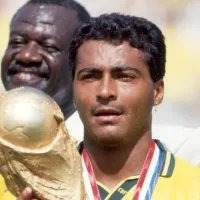ALL POSTS SECTION "news"

World Cup 2022
/ 550 days agoHow to stream World Cup 2022
Moves away from traditional TV lead many wanting to stream the 2022 World Cup. Soccer fans across the United States are canceling cable and satellite options. They are costly, and often lead to channels and options that do not serve much of a purpose to dedicated sports fans. The World Cup is available for fans […]

News
/ todayMan City's risky call to sell Cole Palmer could haunt them
Manchester City manager Pep Guardiola has revealed that Cole Palmer requested a move away from the club for two years. The attacking phenom previously signed a five-year contract with City in 2021. However, despite being just 21, Palmer asked team officials for a transfer away due to lack of playing time. He was eventually granted […]

News
/ todayItaly earns extra UCL spot: What England needs to top Germany
To increase the number of Champions League teams to 36, two leagues will be given an additional spot for next year. That depends on how well they did in Europe this year. For this season's coefficient rankings, UEFA looks at how each team fares in the UEFA Champions League, Europa League and Europa Conference League. […]

News
/ todayRomario joins list: Oldest soccer players still playing in 2024
Youth, nimbleness and speed are often lauded as the most important attributes in soccer. However, there is an unusual breed of players who challenge the concept that aging is a disadvantage to success. Despite the passage of time, these extraordinary individuals keep donning their kits and boots and making a grand entrance on the field. […]

News
/ todayRevolutionary plan to put end to dishonest referees revealed
Ukrainian hero Andriy Shevchenko has been in the spotlight since becoming President of the Ukraine Football Association in late January. Yet, the former striker is doing more than managing the soccer of Ukraine. He is addressing the long-standing problem of referee prejudice. Several people felt strongly about the selection of Shevchenko as president of the […]

News
/ todayTigres player earns 11-game ban for using laser pointer in game
The Mexican Football Federation (FMF) has issued a harsh ban to Tigres goalkeeper Nahuel Guzman for his actions during a recent game against Monterrey. Guzman did not commit a hard foul or use poor language during the Liga MX clash. Instead, the goalkeeper was not even on the pitch for the fixture. Guzman missed the […]

News
/ todayNagelsmann extends deal with Germany: Bayern opts for plan C
Julian Nagelsmann has rejected a chance to rejoin Bayern Munich this summer. The highly rated coach instead opted to sign a contract extension with the Germany national team. Nagelsmann previously managed the Bundesliga side for 18 months ending in March of 2023. After being fired by Bayern, the coach eventually took over the national team […]

News
/ todayLeverkusen stays unbeaten, Liverpool exits Europa League
The Europa League quarterfinals concluded on Thursday as four teams booked spots in the semifinals. Liverpool, the tournament's favorite, could not conquer Atalanta after the stunning 3-0 defeat at Anfield one week ago. Roma, which has been flying under Daniele de Rossi, defeated Milan in both legs. The much-anticipated fixture between Bayer Leverkusen and West […]

News
/ 1 day agoFlorian Wirtz leads Leverkusen as best young player in Europe
The modern era of European soccer has put a premium on young players dominating. In Spain, Lamine Yamal, Pau Cubarsi and the rest of the La Masia graduates have helped turn a dire situation around at Barcelona. The Premier League has seen players like Cole Palmer, Kobbie Mainoo, Alejandro Garnacho and Harvey Elliott. Yet, 20-year-old […]

News
/ 1 day agoHow to get tickets to Man United vs Liverpool in South Carolina
Tickets to this summer's friendly between Manchester United and Liverpool in Columbia, South Carolina, sold out within three hours of going on sale. That is particularly impressive given that Williams-Brice Stadium, the hosting venue for this game, has a capacity of over 77,000. More noteworthy, tickets are now available on the secondary market. There are […]

News
/ 1 day agoBack on field at 58: Romario becomes oldest player in world
For some players, age is nothing more than a number. But when contrasted with the life of Brazilian superstar Romario, the incredible tales of those top sportsmen pale in comparison. As a 58-year-old star from Brazil, Romario has accomplished a great deal. He won the World Cup with Brazil and later became a senator. He […]

News
/ 1 day agoMessi’s time is running out to help MLS Season Pass
The window of opportunity to increase Apple's MLS Season Pass signups with Lionel Messi is rapidly closing. Shortly before the start of the Copa America and two friendlies in the US, the Argentine's erratic nature will prompt him to report to training camp to ensure he is fit for the national team. Argentina will be […]

News
/ 1 day agoMajor clubs missing at 2025 Club World Cup in USA
The 32-team field for the 2025 Club World Cup is coming together. The completion of the 2023/24 UEFA Champions League quarterfinals locked up the 12 allocated spots from Europe. Everything is set in stone for the revised Club World Cup, which is coming to the US in 2025. It will bring together the 32 teams […]

News
/ 1 day agoFabregas says Mainoo should be midfield centerpiece at United
Cesc Fabregas has claimed that Manchester United needs to build their team around Kobbie Mainoo in the midfield. The former Spanish soccer star made the comments while speaking on BBC's Planet Premier League podcast. Fabregas previously played for Arsenal, Barcelona, Chelsea, and Monaco before retiring after one season with Italian side Como. The Spaniard is […]

News
/ 1 day agoScrapping FA Cup replays financially hurts lower level clubs
The Football Association (FA) and the Premier League have agreed to cancel FA Cup replays from the first round onwards. An announcement regarding the tournament changes happened on Thursday as part of a new six-year deal between the two sides. The change will launch ahead of the 2024/25 season. The FA Cup currently has no […]
